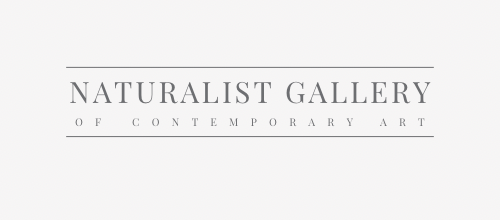Featured image: Science, Fiction, Histoire, Cliff Tisdell, 2025, oil on canvas, 12 x 12 in. / 30.48 x 30.48 cm.
In his series Fahrenheit 451/Truffaut, artist Cliff Tisdell blurs the boundary between abstraction and narrative, philosophy and cinematic homage.
Cliff Tisdell creates conceptual works that explore abstraction, memory, and the embodiment of literature through multimedia painting and found text.
Using dual-sided canvases, each work features a vibrant oil painting on the front and a still from François Truffaut’s film adaptation of Fahrenheit 451 on the back, overlaid with iconic lines that personify classic literary texts. Together, these multimedia pieces transform ephemeral knowledge into embodied portraiture, each book reanimated, each memory recontextualized.
Explore our curated selection of contemporary artists from around the globe.
Naturalist Gallery offers artist representation internationally. Apply your art.
Fahrenheit 451/Truffaut, Plato's Republic, Cliff Tisdell, 2025, oil on canvas board, 8.5 x 8.5 in. / 21.59 x 21.59 cm.
In the first work, Tisdell overlays Truffaut’s film still with the quote: “I am Plato’s Republic, I’ll recite myself whenever you like.” The oil painting on the front is a wash of burning amber and coral, suggesting both the firemen’s destruction of books and the inner glow of philosophical reflection. Small color blocks, red, teal, green, act as visual place-markers, like coded knowledge tabs. Here, The Republic is not merely referenced; it speaks, alive in the voice of a resistance member turned memory vessel.
Fahrenheit 451/Truffaut, Cliff Tisdell, The Prince, 2025, oil on canvas, 8.5 x 8.5 in. / 21.59 x 21.59 cm.
In the second canvas, darker hues dominate, a bruised twilight of purples and grays pierced by acidic orange and neon pink. It echoes the strategic cunning of Machiavelli’s The Prince, whose text is declared on the back in stark, dry humor: “I am The Prince by Machiavelli.” The still image is grimly comic, emphasizing the manipulation and duplicity central to the book’s themes. Tisdell’s gestural strokes suggest a forest of veiled motives, where ethics twist and contort in the fog of ambition.
Fahrenheit 451/Truffaut, The Jewish Question, Cliff Tisdell, 2025, oil on canvas board, 8.5 x 8.5 in. / 21.59 x 21.59 cm.
The third piece, softer and dreamlike, overlays yellows and greens like sedimentary layers of memory and social tension. A bright orange block cuts through the calm, a signal flare from beneath repression. On the back, a youthful face meets the viewer with an unsettling smile: “I’m Jean-Paul Sartre’s The Jewish Question, delighted to meet you.” It’s a statement of identity, irony, and alienation. Sartre’s existential confrontation with antisemitism becomes a child's introduction, disarmingly polite yet politically loaded.
Tisdell’s Fahrenheit 451/Truffaut series reinvents the act of remembering. Each piece is both artifact and avatar, a painted cover and a speaking spine. Drawing on Ray Bradbury’s dystopian vision, where books are burned and remembered only by those who “become” them, Tisdell collapses text, image, and self into compact conceptual portraits. The viewer is asked not just to look, but to listen, to become a vessel, too.
Learn more About Naturalist Gallery of Contemporary Art.
Les Gens Du Livre, Cliff Tisdell, 2025, oil on canvas, 30 x 34 in. / 76.2 x 86.36 cm.
You may also find the following articles helpful:
The 14 Essential Artists of Impressionism
Expressionism: 20 Iconic Paintings & Their Artists
Renaissance Art: Origins, Influences, and Key Figures
Classical Art Movement: Exploring the History, Artists, and Artworks
Figurative Art: Understanding, Collecting, and Appreciating the Style
Daily Routines of Famous Artists: Learn from the Masters
Top 12 Controversial Artworks That Changed Art History





